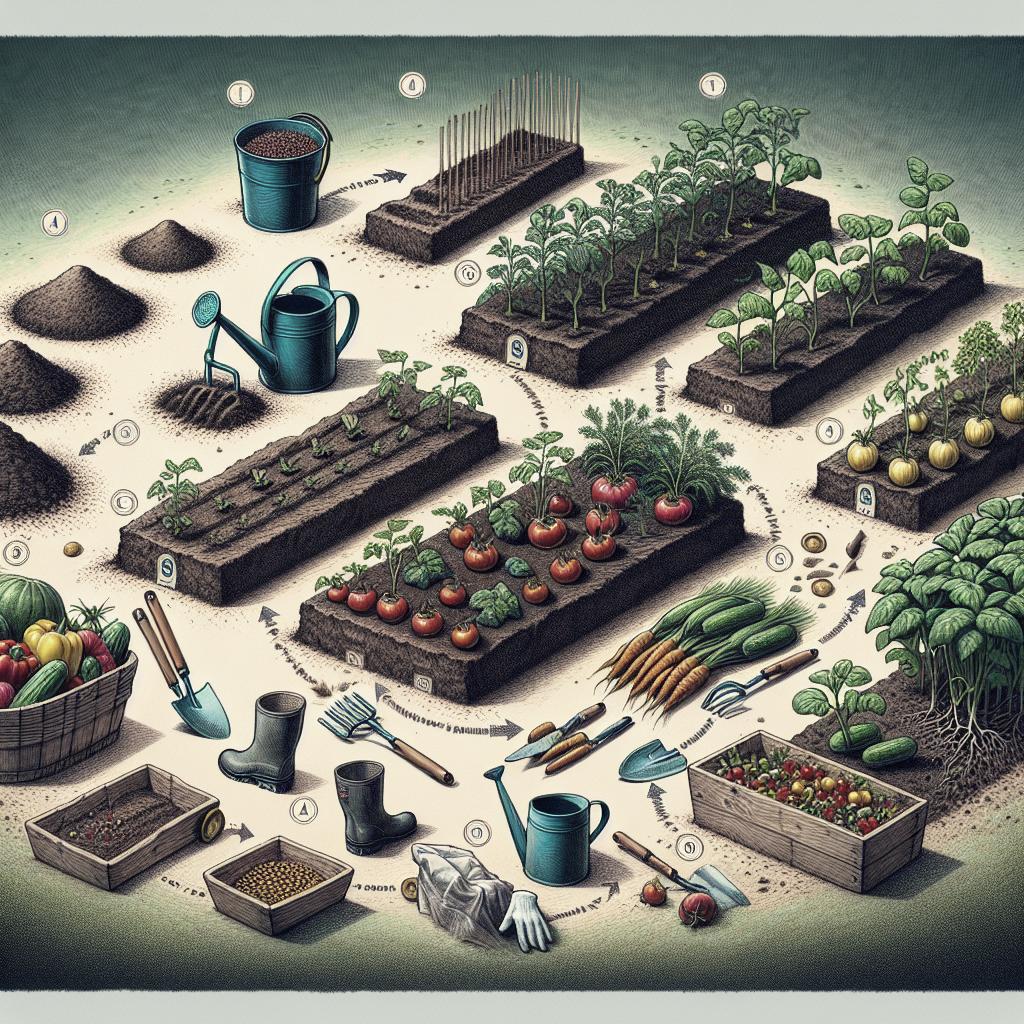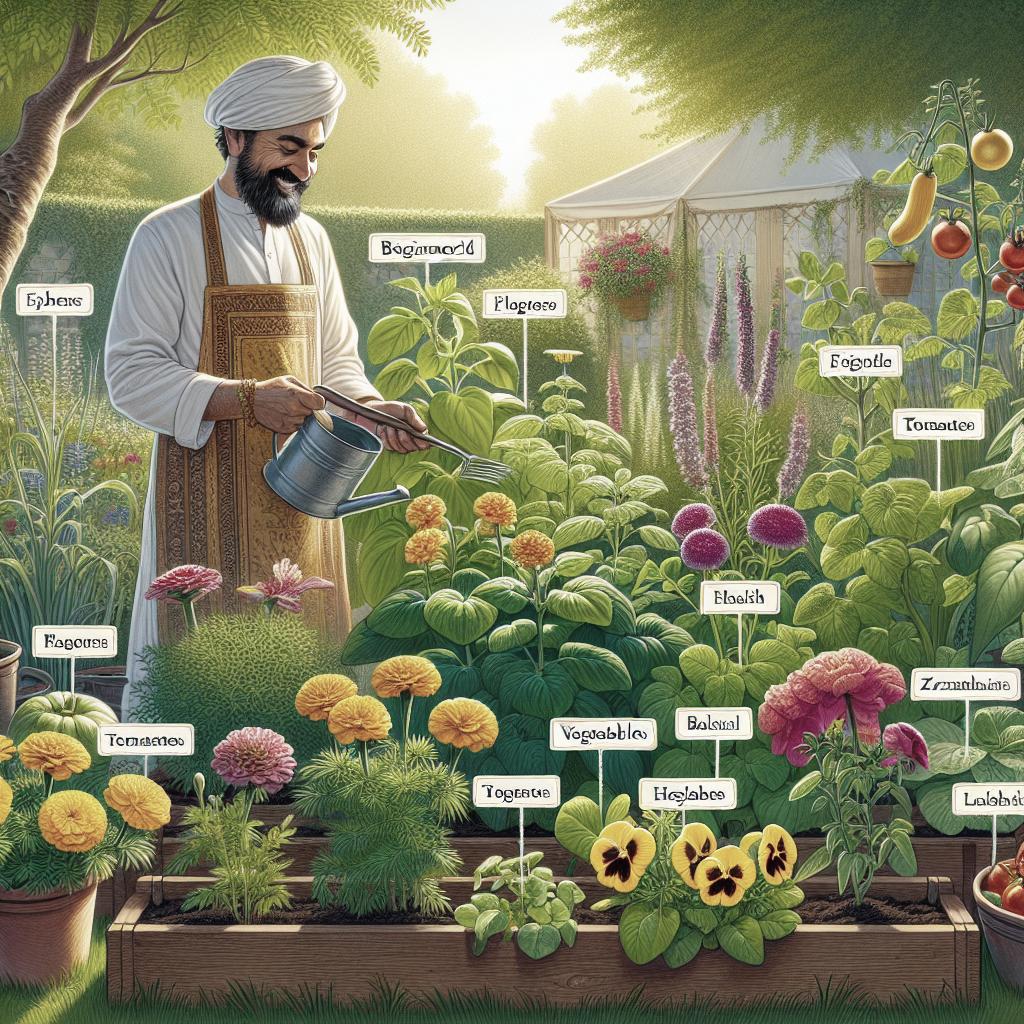“`html
How to Create a Wildlife-Friendly Garden
Transforming your yard into a wildlife-friendly garden contributes significantly to local biodiversity and ecosystem health. By adopting sustainable practices, providing essential resources like food and water, and creating safe habitats, you support various species that are vital to maintaining ecological balance. This guide offers insightful steps on fostering a thriving wildlife habitat. From understanding the specific types of wildlife that can benefit from your garden to getting your sanctuary certified, these actionable strategies help make your garden a welcoming haven for nature.
So, what kind of “Wildlife” are we talking about?
When we talk about wildlife in the context of garden habitats, we refer to a broad range of creatures. Birds, butterflies, bees, amphibians, and small mammals are just a few examples. Each plays a critical role in the ecosystem, contributing to pollination, pest control, and the recycling of nutrients.
Understanding the specific needs of these creatures is crucial. While birds may require trees for nesting, butterflies need flowering plants for nectar. Identifying local species helps tailor your garden to meet the needs of native fauna, ensuring they can thrive in their natural environment without competing against non-native invaders.
What is the difference between a yard or garden, and a wildlife habitat?
A conventional garden often prioritizes aesthetics, focusing on flowers, shrubs, and manicured lawns. It may lack the elements necessary for supporting wildlife, such as food, water, cover, and spaces for raising young. Such spaces can also rely heavily on non-native plant species and chemical treatments.
A wildlife habitat, on the other hand, integrates natural processes and accommodates the needs of localized species. It emphasizes biodiversity, using native plants that can thrive without artificial supports such as pesticides. Creating a wildlife habitat means this space functions as a dynamic part of the ecosystem, drawing in organisms that facilitate pollination, decomposing organic materials, and keeping pest populations in check.
1) Sustainable Practices
Go Organic
The foundation of a wildlife-friendly garden is an organic approach. Avoid synthetic pesticides and fertilizers that can harm beneficial insects and disrupt the balance of your local ecosystem. Opt for natural alternatives and practices such as composting and mulching to enhance soil health and nutrient content.
Encouraging beneficial insects like ladybugs and lacewings control harmful pest populations naturally. Plants’ health largely derives from living in a chemical-free environment. Thus, switching to organic encourages a self-sustaining garden that flourishes without harmful human interference.
Choose Native Plants
Native plants come pre-adapted to your local climate, soil, and wildlife. They require fewer resources like water and nutrients while providing critical habitats to native insects, birds, and other wildlife. Moreover, they repel many common weeds and pests without chemical interventions.
By choosing native plants, you also support the life cycles of indigenous species. From nesting sites for birds to nectar sources for pollinators, recognizing the importance of native flora breeds a thriving wildlife ecosystem interconnected with the broader environmental framework of your region.
Soil & Water Conservation
Healthy soil and water conservation directly influence the ecological health of your garden. Techniques such as rainwater harvesting, using drip irrigation systems, and planting cover crops significantly reduce water usage and prevent soil erosion.
Another crucial practice is mulching, which helps soil retain moisture, suppresses weeds, and maintains a suitable temperature. By focusing on soil and water conservation, you ensure that factors critical to wildlife viability are abundant, sustainable, and in line with natural cycles.
2) Food for Wildlife
Providing a consistent food source can draw a wide variety of wildlife to your garden. Plant fruiting trees and shrubs to offer food supplies through different seasons. Incorporate flowering plants with varied bloom times to ensure availability of nectar and pollen throughout the year.
Supplementing plant-based food sources with bird feeders and squirrel trays can attract more species. It also helps wildlife species during harsh winters or dry summers. However, ensure feeders are hygienic and safe, as disease can spread quickly in congregated wildlife locations.
3) Sources of Water for Wildlife
Here are several ways to provide water sources to the wildlife in your garden, and related tips:
A reliable water source is vital for any wildlife-friendly garden. Install birdbaths, or shallow water basins placed at ground level for small mammals and amphibians. Frequent cleaning and replenishment of these water sources help to keep them safe and inviting for wildlife.
Adding a pond or water feature also increases habitat diversity. Not only do they offer drinking water, but they also create breeding grounds for frogs and beneficial insects. Incorporating plants with your water features, such as water lilies, provides natural filtration and additional cover for aquatic species.
4) Shelter & Cover for Wildlife
Creating safe havens for wildlife involves maintaining various types of cover. Bushy shrubs, dense clusters of trees, and rock piles can offer protection from predators and harsh weather conditions. These areas also serve as nesting sites and resting places.
Incorporate deadwood features, such as logs or twig piles. They decompose over time, promoting insect life, which in turn becomes food for birds and mammals. These features aid in creating a natural camouflage, encouraging wildlife to establish their homes in your garden.
5) Places to Raise Young
It’s important to provide specific structures for wildlife to raise their young. Birds require nesting boxes or native trees with safe hollows. Steep banks or burrows can accommodate rabbits or burrowing animals.
Plants tailored to caterpillar growth, such as milkweed for monarch butterflies, encourage breeding and transform your garden into a vital life cycle stage. By providing these resources, your garden becomes an intergenerational sanctuary for wildlife.
How to Get Your Yard or Garden Certified as a Wildlife Habitat
Would you like to save this?
Certifying your wildlife habitat through programs such as the National Wildlife Federation gives formal recognition to your efforts. Requirements typically include providing food, water, cover, and places for wildlife to raise young. Your certification promotes continuous engagement and responsibility towards local ecology.
Not only does certification validate your work, but it can also inspire others in your community to develop their own wildlife-friendly spaces, thereby creating a network of refuges that uphold biodiversity and ecological health.
Want to Learn More?
Additional resources and advice can be found through environmental organizations, local gardening clubs, and online platforms dedicated to wildlife-friendly practices. They provide invaluable information on specific regional wildlife needs, innovative garden design ideas, and community support programs.
Engagement with such resources allows continuous growth in knowledge, ensuring you stay updated on current practices and trends. This collaborative learning further empowers you to make impactful decisions in your garden’s ecological practices.
Summary of Main Points
| Element | Key Features |
|---|---|
| Sustainable Practices | Organic methods, native plant selection, and resource conservation |
| Food for Wildlife | Plant-based sources, feeders for birds and mammals |
| Sources of Water | Birdbaths, ponds, and water features with native aquatic plants |
| Shelter & Cover | Bushy shrubs, rock piles, and deadwood structures |
| Places to Raise Young | Nesting boxes, burrows, and caterpillar-friendly plants |
| Certification | Engagement in certification programs for recognition and community inspiration |
“`


